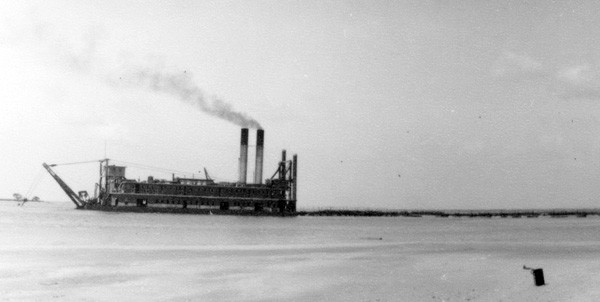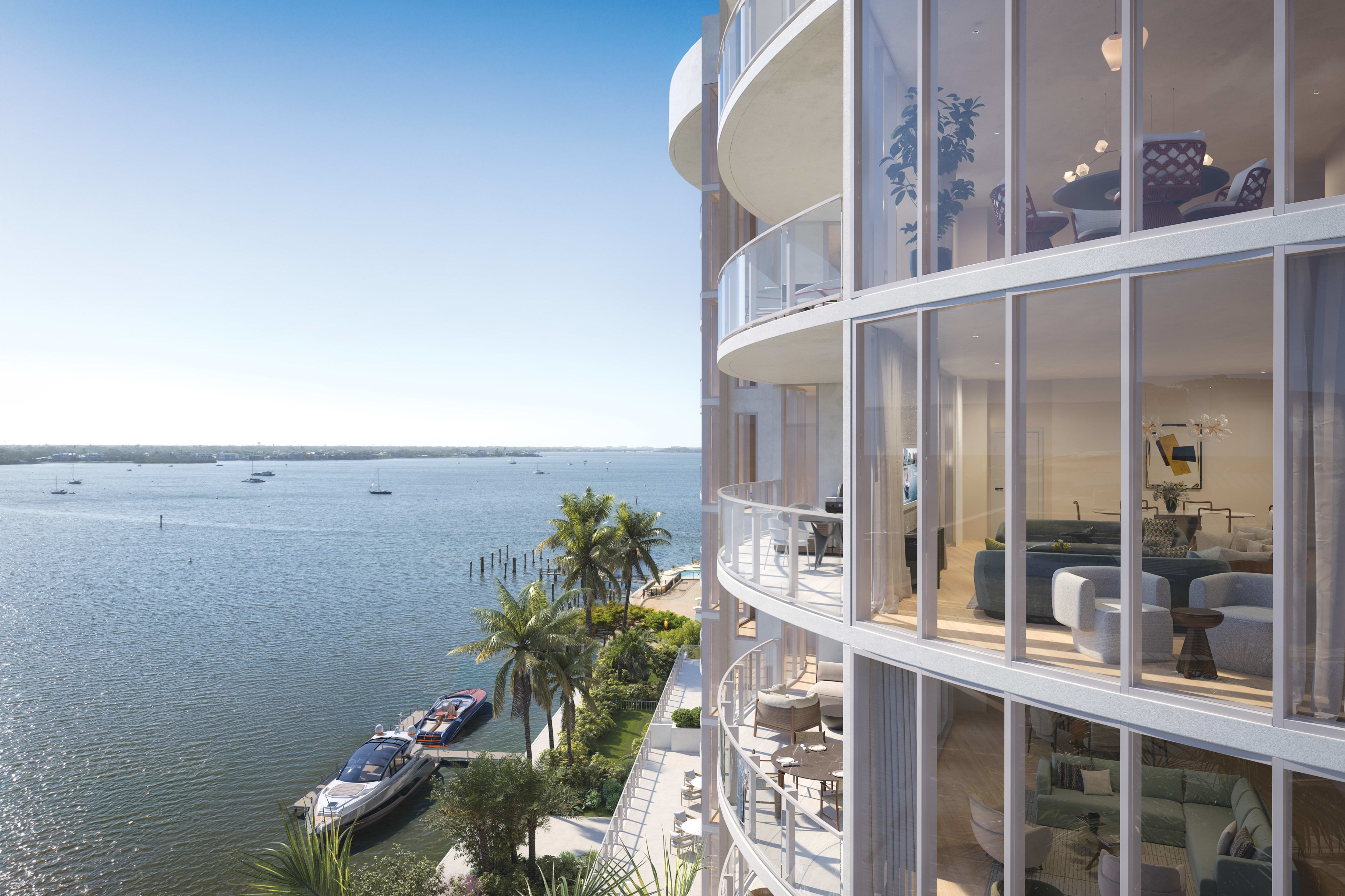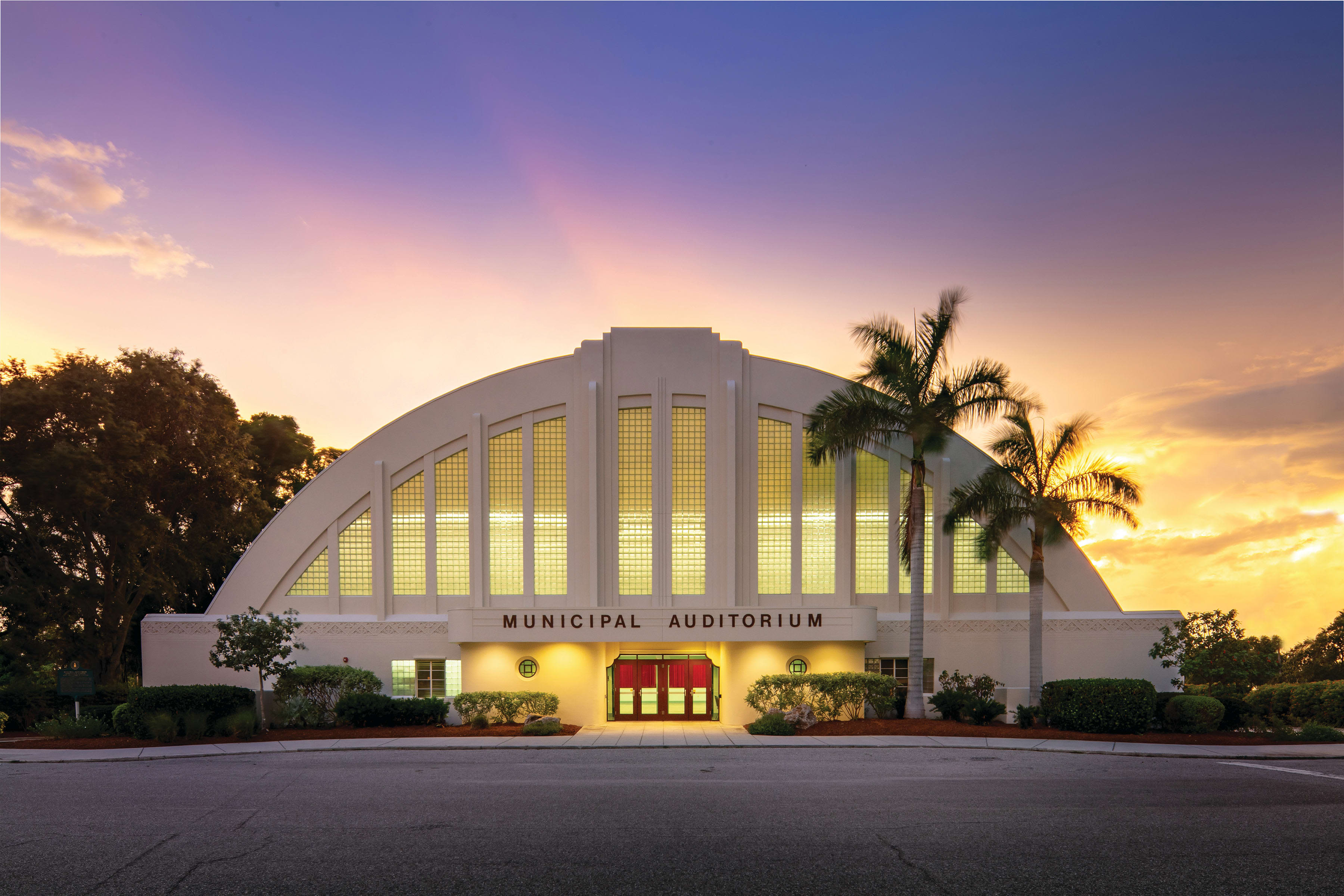Dredging Altered the Landscape of Sarasota in Early 20th Century

The dredge, in years past, was a major instrument of change. Not hampered by today's regulations, the dredge created islands, opened canals and altered shorelines past recognition. When Mayor E.A. Smith led the city in acquiring the Civic Center, which was land between 6th and 10th Streets and west of U.S. 41 that was available for back taxes during the Depression, fisherman's net spreads dotted the water just beyond the lawn bowling courts.
Twenty years later, before the Van Wezel Performing Arts Hall, the first Selby Library (which later became G.WIZ), the Hyatt Hotel, 888 Condominium and the recently demolished Quay could be built, dredges had to create the land on which they sit.
When Owen Burns' construction company built the first Ringling Causeway for John Ringling, the causeway left the mainland from a newly created Golden Gate Point. Before Burns' dredge added sand, the original Cedar Point had been smaller, lower and wetter. It had served the fishermen and boat builders well, but was not appropriate for home construction. Ringling also added fill to connect his newly acquired Bird Key to the causeway.
When John Ringling Estates, Inc. platted the development of Lido Key in 1926, it was for a new key created out of a collection of smaller islands that for some time had been called the Cerol Isles. Owen Burns' dredging company made the physical transformation. The new name, Lido (Italian for beach), connected the enterprise with the Mediterranean theme that permeated the architecture of the 1920s Boom Period.
At the same time, Sarasota city leaders dreamed of a deep water port at Payne Terminal (present boat launching ramp area of Centennial Park). They sold the city's electric plant to Florida Power & Light Company for $1 million and hired United Dredging Company of Tampa to clear a channel through New Pass to the mainland. The result was a 10-foot deep channel and a new 58-acre "City Island" at the northeast end of Lido Key.
To the South, Siesta Key had been the object of dredging when it was still called Sarasota Key. Harry Higel, one of three partners in the Siesta Land Company, dredged bayous Hanson, Nettie, and Louise in the platted subdivision of Siesta during the early 1910s.
The following decade, additional dredging helped carve out Palm Island in the heart of the key.
The view of Sarasota Bay for Gulf Stream Avenue changed drastically from the end of the 1950s to the early 1960s. Their waterfront properties became landlocked with the re-routing of US 41 away from Main Street and around the bayfront. Extensive dredging and filling resulted in enough land added to the west of Gulf Stream Avenue to provide for a four-lane highway, parking and a new Island Park.
Out in the bay, Arvida Corporation, began dredging around the small Bird Key that it had purchased from the Ringling family holdings in the late 1950s. Filling in shallow grass flats that had served as fish "nurseries," the developer created a subdivision more than ten times the size of the original island. Building on the strength of Sarasota's second major population explosion, the new Bird Key symbolized the direction of that period's growth. It also became a catalyst for publicly expressed environmental concern for the bay, however, and the heyday for dredging to create additional waterfront property came to an end.
Special thanks to Ann A. Shank, former Sarasota County Historian, for her research and time devoted to writing this article. Provided by Sarasota History Alive. "Where History Happens Everyday!" www.sarasotahistoryalive.com



